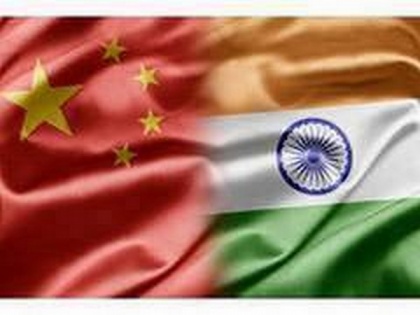Indian Army busts myth of PLA's might
By ANI | Published: September 16, 2020 01:37 AM2020-09-16T01:37:45+5:302020-09-16T01:55:03+5:30
The recent actions by Indian Army amid the border tension demonstrate India's determination to stand up to China's bullying and its efforts to use coercion to have its way, experts have said.

Indian Army busts myth of PLA's might
The recent actions by Indian Army amid the border tension demonstrate India's determination to stand up to China's bullying and its efforts to use coercion to have its way, experts have said.
The armies of the two countries are in close proximity in some areas of eastern Ladakh.
The Chinese PLA, which has not fought a war since it got a bloody nose against Vietnam, might have underestimated India's resolve to defend its sovereignty and territorial integrity.
For all their famed strategic thinking and planning, they failed to take into account the bravery and courage of Indian soldiers.
Defence Minister Rajnath Singh has made it clear that India was ready to deal with "any situation".
"I want to assure you that we are ready to deal with any situation. I request this House to pass a resolution that we stand shoulder to shoulder with our armed forces who are guarding our borders to safeguard India's sovereignty and integrity," Singh said in the Lok Sabha on Tuesday.
"Violent conduct of Chinese troops is a violation of all past agreements. Our troops have done counter deployments in the area to safeguard our borders," he said.
Singh said that China has mobilised a huge number of Army battalions and armaments along LAC and inner areas.
"There are many friction points in eastern Ladakh, Gogra, Kongka La, Pangong Lake's north and south banks. Indian Army has made counter deployments in these areas," he said.
The two countries have been engaged in a standoff position since April-May and the Chinese have refused to vacate areas in the Finger area and other friction points in the Eastern Ladakh area.
In many ways, India has shattered the myth of Chinese indomitable military might. Strategic experts acknowledge that the recent developments at the India-China border have changed the so-called 'asymmetry in power' argument.
India holding on at the border 'head-on' for over four months in the face of China's much-vaunted military and economic might, a fact that the Chinese propaganda machinery never fails to highlight, has proved that the asymmetry of power argument does not hold water any more.
Indian force mobilisation has been effective and it has a competitive advantage in mountain warfare owing to the Indian Army's experience of being deployed at high altitudes.
The gallant action by Indian soldiers in Galwan clash in June was acknowledged the world over.
India capturing tactically important commanding heights on the top of the five posts to the south of Pangong Tso on August 29-30 tilted the balance in favour of India, experts said.
The operations to secure the heights on those features were undertaken by the Special Frontier Force (SFF) comprising Tibetans. Taking those heights could lead to interception of Chinese forces, giving India a tactical advantage.
The experts said Indian troops can intercept Chinese moving from Chushul to Demchok through the valleys below.
In a bid to showcase its military might, the PLA has deployed 50,000 strong troops with modern weaponry ready to unleash their power against India. The Chinese have also made many diplomatic statements that were coercive.
These have come from their Ministry of Foreign Affairs, their Defence Ministry, their Western Theatre Command and from the Communist Party mouthpiece Global Times. The different Chinese statements have appeared interventionist, prescriptive and coercive, the experts said.
Consequently, China faced reverses on the Indian front.
After the Pentagon's annual report on China declared the People's Liberation Army Navy (PLAN) as "the largest navy in the world" and highlighted its increasing capabilities, the former Director of National Security Council Secretariat of India, Tara Kartha observed that such forecasts and warnings did not affect Indian decision to counter Chinese belligerence in Ladakh.
"For India, warnings of Chinese aggressiveness were 'superfluous' given the ongoing conflict. Forecasts of superior Chinese power did not affect Delhi's decision to meet the threat head-on, something that other countries need to acknowledge. China is certainly a power to reckon with, but it is not quite the dragon that the Pentagon or Beijing paints it to be," Kartha quipped.
"There was this argument that India being a $2-trillion economy and China being five times that meant that China had a major advantage. They have a much stronger military force, much bigger economy, bigger military spending etc so India is no match for China - that myth has been busted. Concerted action on the part of India has yielded results," said Srikanth Kondapalli, Chinese affairs professor at Jawaharlal Nehru University.
A leading US publication Newsweek reported that the Chinese President Xi Jinping he has risked his future with the high profile incursions into Indian territory that 'unexpectedly flopped' in the face of a ferocious fightback by the Indian Army.
The Chinese army's failures on the Indian border will have consequences, it said, adding "you can say the Indians are more aggressive or more aggressively defensive, but they are in fact bolder and better. The setback in the Himalayas poses problems for Xi, which means it poses a problem for everyone else."
Now, the Chinese side seems to have climbed down and changed tack suddenly, the experts said.
( With inputs from ANI )
Disclaimer: This post has been auto-published from an agency feed without any modifications to the text and has not been reviewed by an editor
Open in app